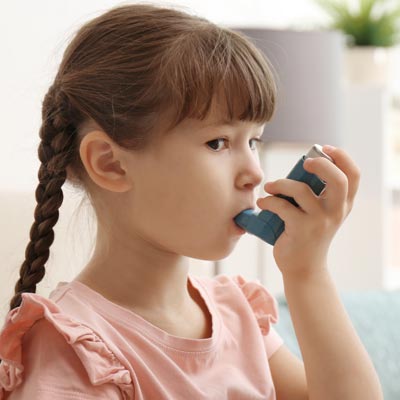Asthma Symptoms and Treatment
Asthma is a chronic inflammatory disease of the airways. A majority of asthma cases are triggered by allergy. Asthma is one of the most common chronic childhood diseases.
Asthma symptoms
- Wheezing
- Shortness of breath
- Frequent respiratory infections
- Cough – can be chronic, with phlegm or dry, mild or severe (often happens at night or during exercise)
- Chest tightness
- Irritated throat
Asthma symptoms may be aggravated by allergen exposure, respiratory infections, air pollution including tobacco smoke, and exercise — particularly in cold weather.
For some asthmatics, symptoms appear a few times each year, particularly with acute exposure to mold, dust, grass, weed and tree pollens, and animal dander. For others, particularly those allergic to dust mite and mold, asthma symptoms can be debilitating and appear daily.
Though asthma attacks can happen any time of the year, there can be spikes in the fall due to pollens, molds and the exchange of viruses as the school year begins.
How can allergy drops help asthma symptoms?
The only long-term way to prevent the lasting effects of allergic asthma is to treat the underlying cause of the inflammation with immunotherapy like allergy drops.
Studies show benefits of treating the underlying allergy and validate sublingual immunotherapy as an effective treatment for patients with allergic asthma.
A 2018, review of 54 studies found that both sublingual and subcutaneous immunotherapy have benefits as treatments for allergic asthma. In summary, “sublingual immunotherapy improves asthma symptoms, quality of life and FEV1 [Forced Expiratory Volume], and reduces the use of long-term control medications. It may also reduce the use of quick-relief medications.”
Here are the most prominent findings in regard to SLIT:
- SLIT improves asthma symptoms
- SLIT improves disease-specific quality of life
- SLIT decreases the use of long-term control medications
- SLIT may decrease quick-relief medication use
- Local reactions are common, but there are few systemic reactions with SLIT











